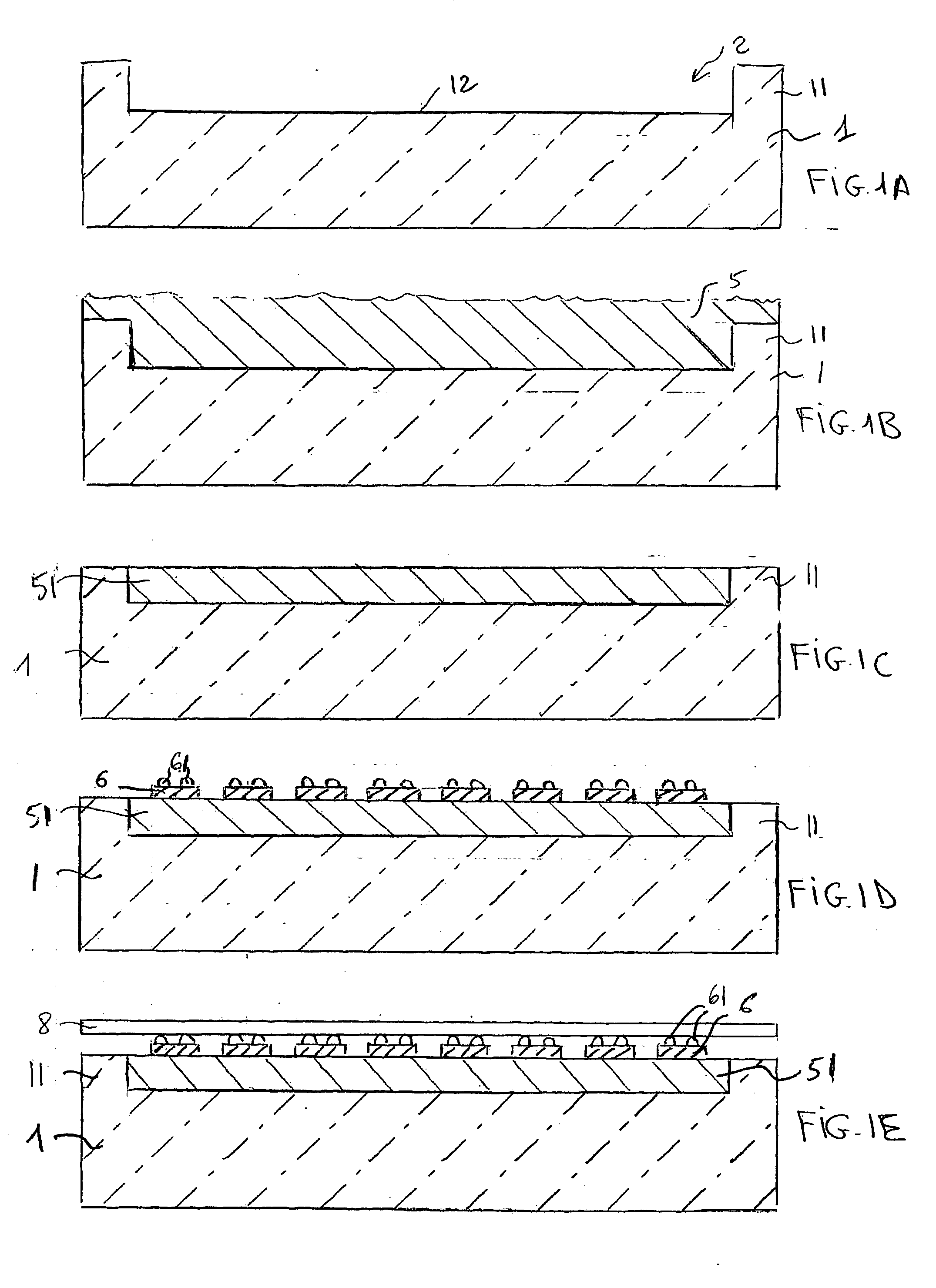Thin glass chip for an electronic component and manufacturing method
a technology of electronic components and manufacturing methods, applied in glass shaping apparatus, decorative surface effects, decorative arts, etc., can solve the problems of large loss of mechanical strength of wafers, risk of cracks or breaks of components formed at the front surface, and small thickness desired for final components, etc., to achieve the effect of suppressing the risk
- Summary
- Abstract
- Description
- Claims
- Application Information
AI Technical Summary
Benefits of technology
Problems solved by technology
Method used
Image
Examples
first embodiment
[0038]FIGS. 1A TO 1G illustrate, in simplified cross-sectional views, a method for manufacturing passive components on insulating substrates, preferably made of glass, according to the present invention.
[0039] It is started from a silicon wafer 1 (or another material currently used as a substrate in the electronic industry, preferably, of low cost). An etch, preferably circular, is performed in wafer 1, to obtain a peripheral silicon wall 11 surrounding the disk-shaped bottom 12 of the performed etch. FIG. 2A shows a top view of this structure.
[0040] According to an embodiment of the present invention, the depth of the obtained cavity 2 is selected to correspond (at least approximately) to the final thickness desired for the glass substrates intended to support the components formed at the front surface. For example, the etch depth ranges between 20 and 100 μm while the total thickness of wafer 1 is initially greater than the etched depth (for example, 500 μm).
[0041] The function ...
PUM
| Property | Measurement | Unit |
|---|---|---|
| thickness | aaaaa | aaaaa |
| depth | aaaaa | aaaaa |
| thickness | aaaaa | aaaaa |
Abstract
Description
Claims
Application Information
 Login to View More
Login to View More - R&D
- Intellectual Property
- Life Sciences
- Materials
- Tech Scout
- Unparalleled Data Quality
- Higher Quality Content
- 60% Fewer Hallucinations
Browse by: Latest US Patents, China's latest patents, Technical Efficacy Thesaurus, Application Domain, Technology Topic, Popular Technical Reports.
© 2025 PatSnap. All rights reserved.Legal|Privacy policy|Modern Slavery Act Transparency Statement|Sitemap|About US| Contact US: help@patsnap.com



